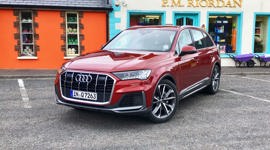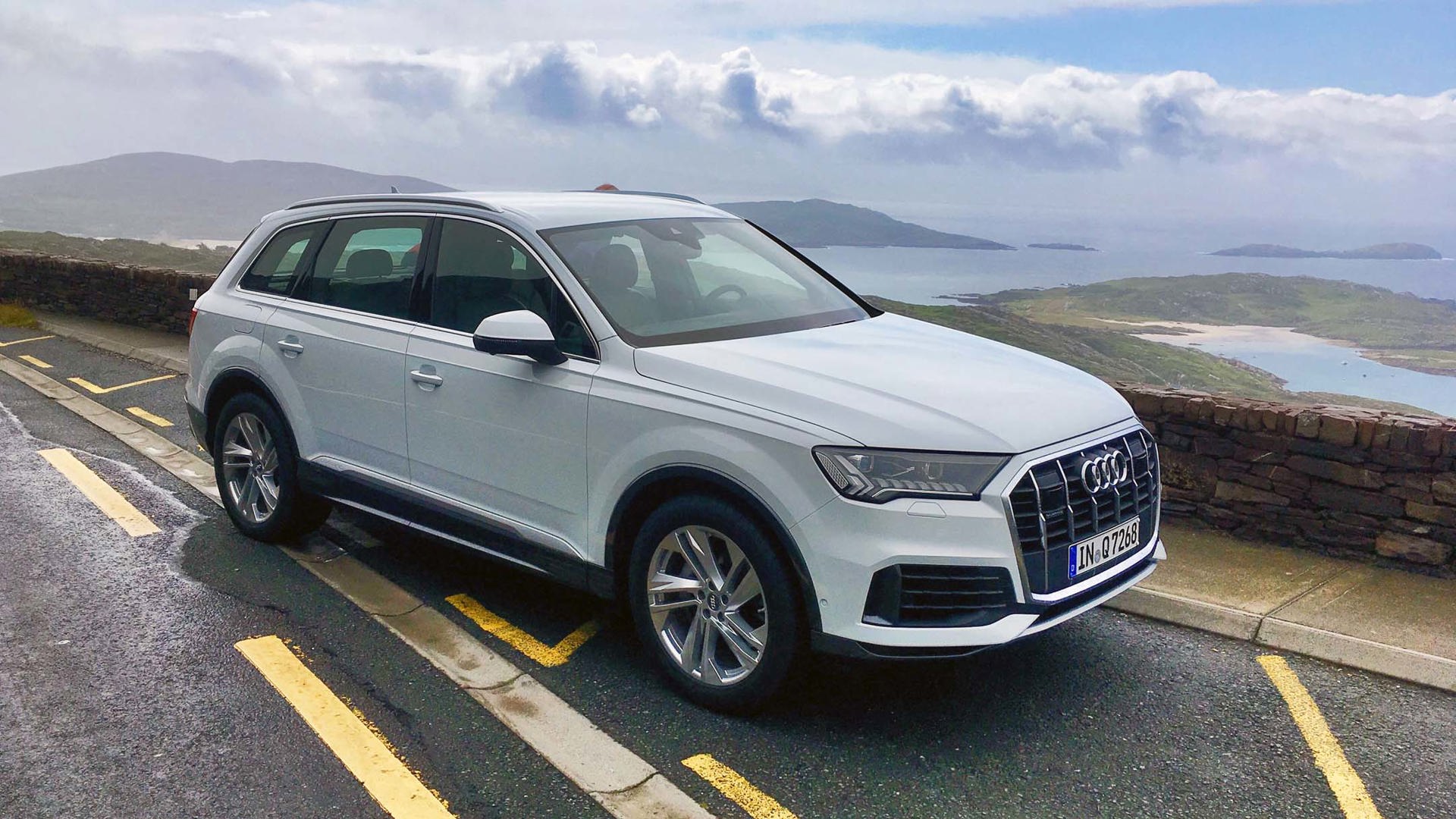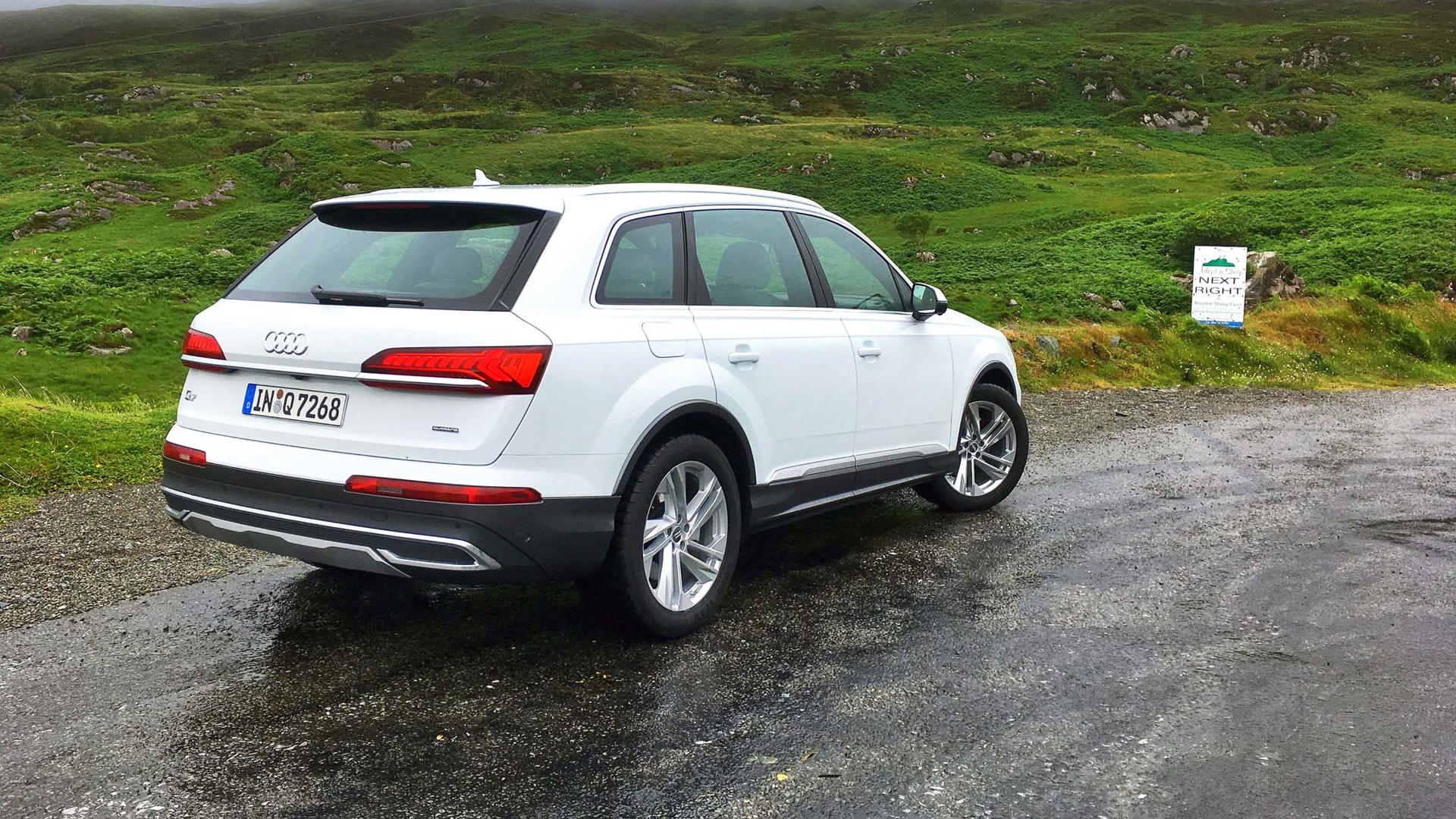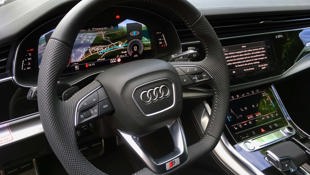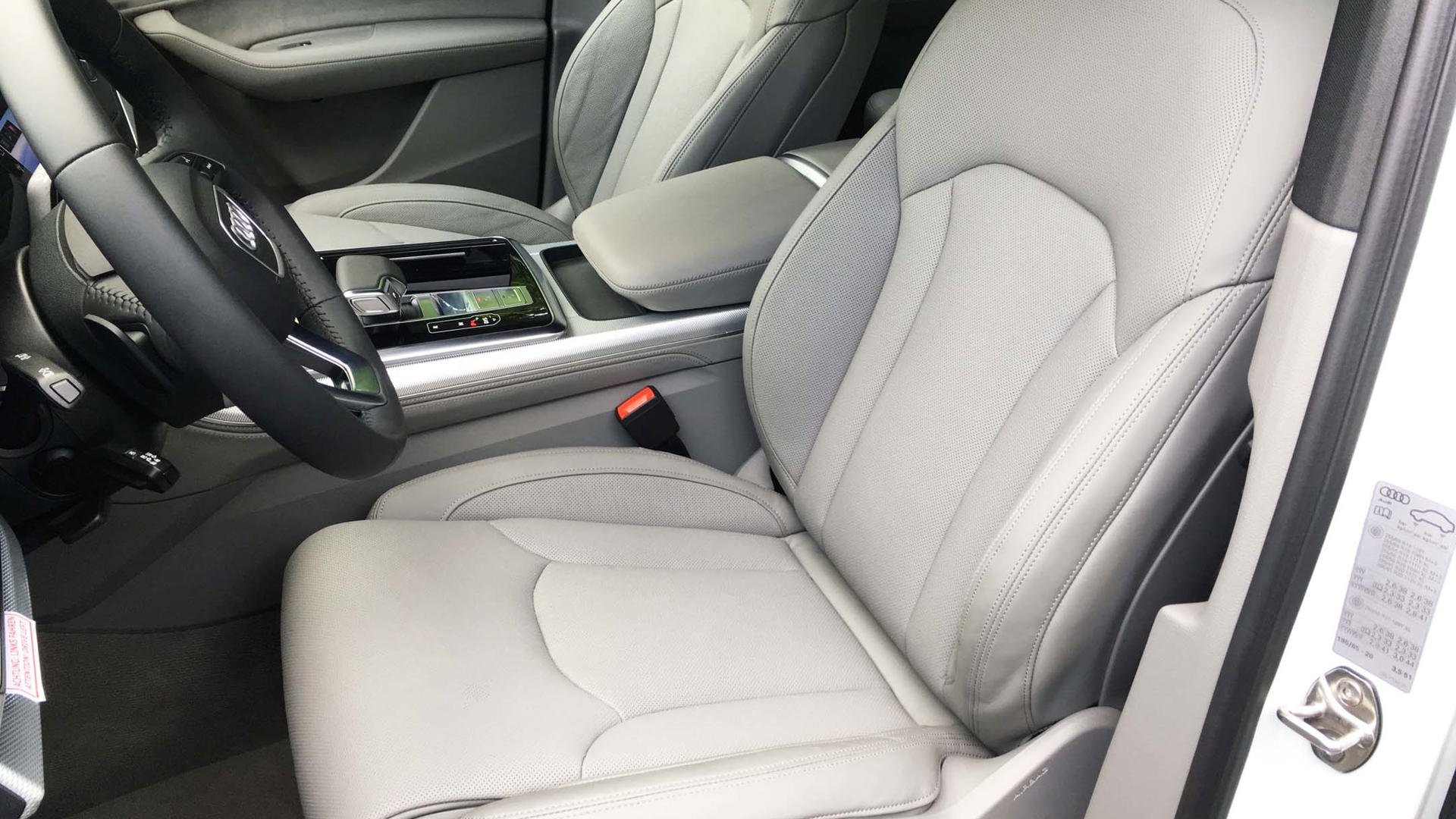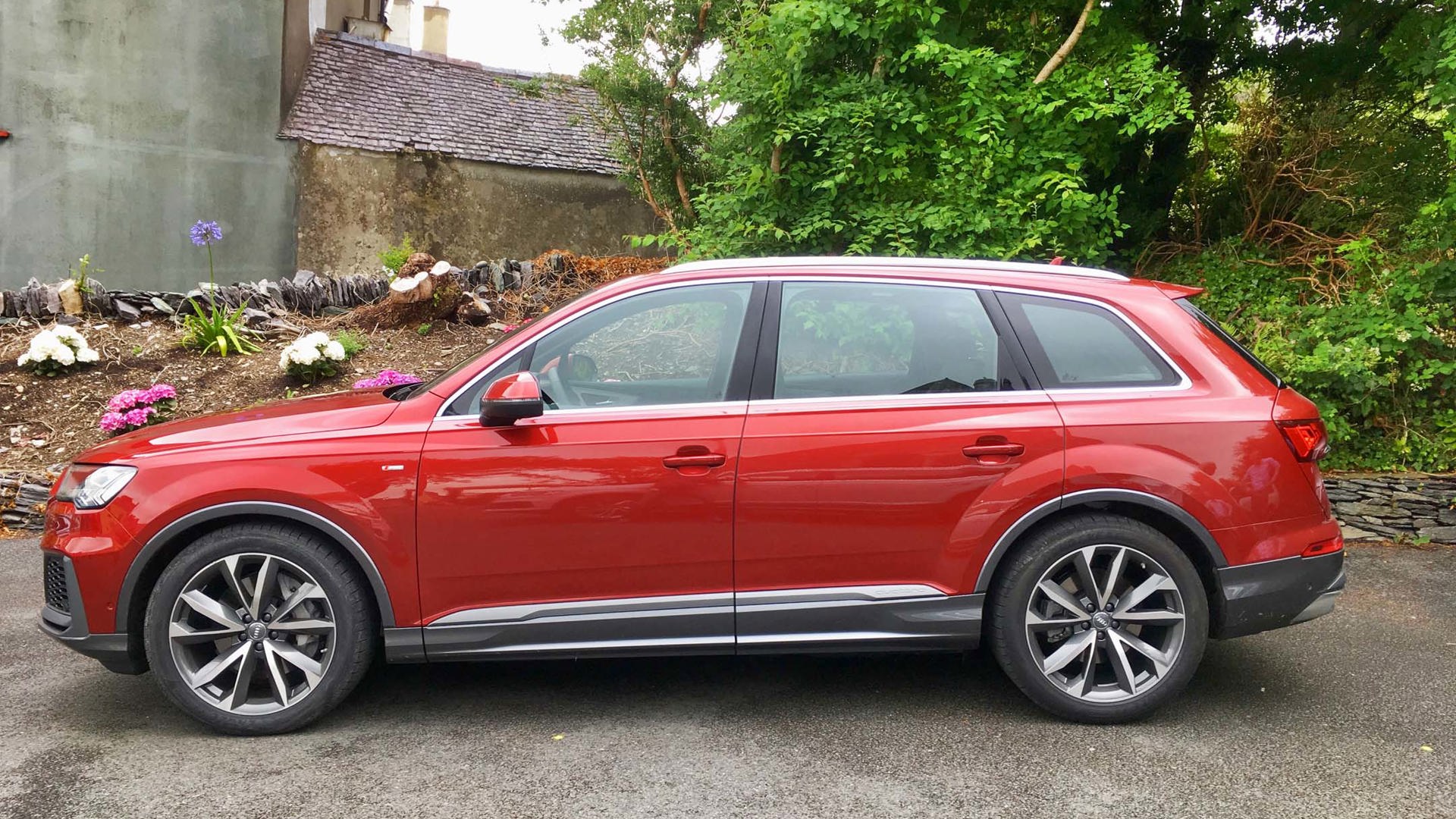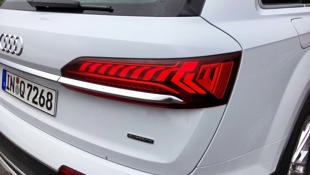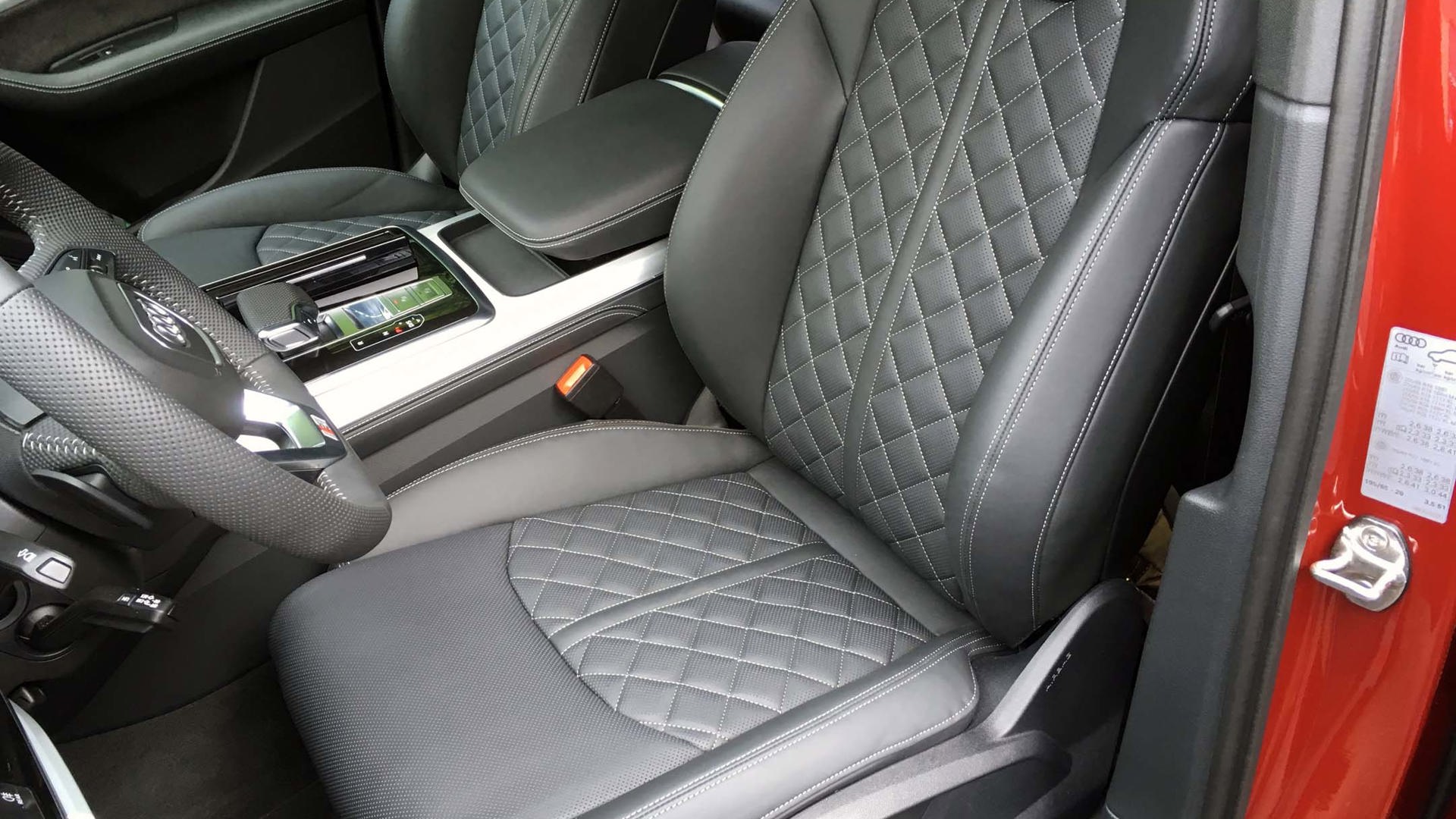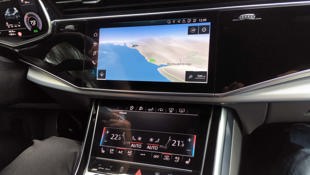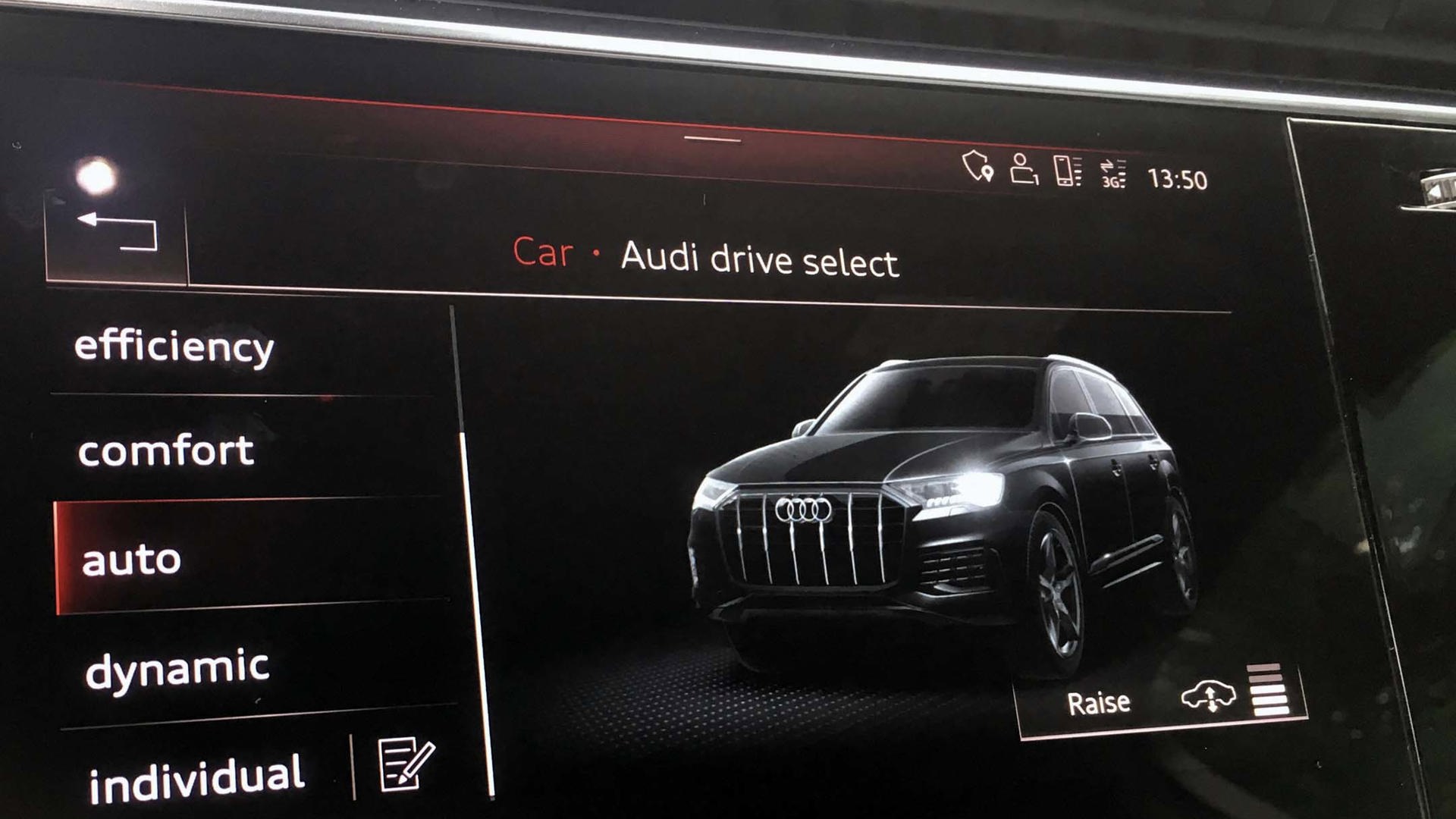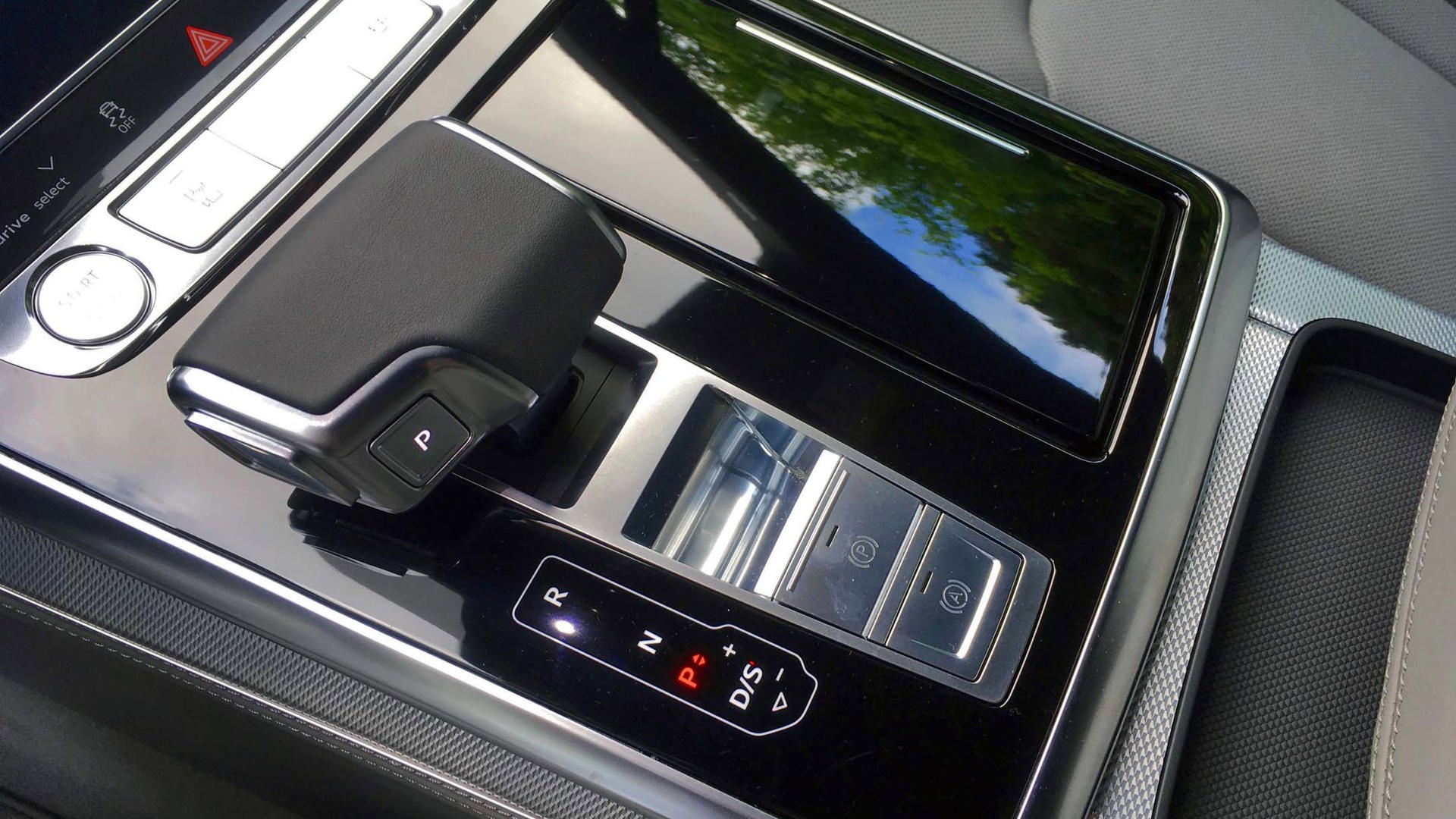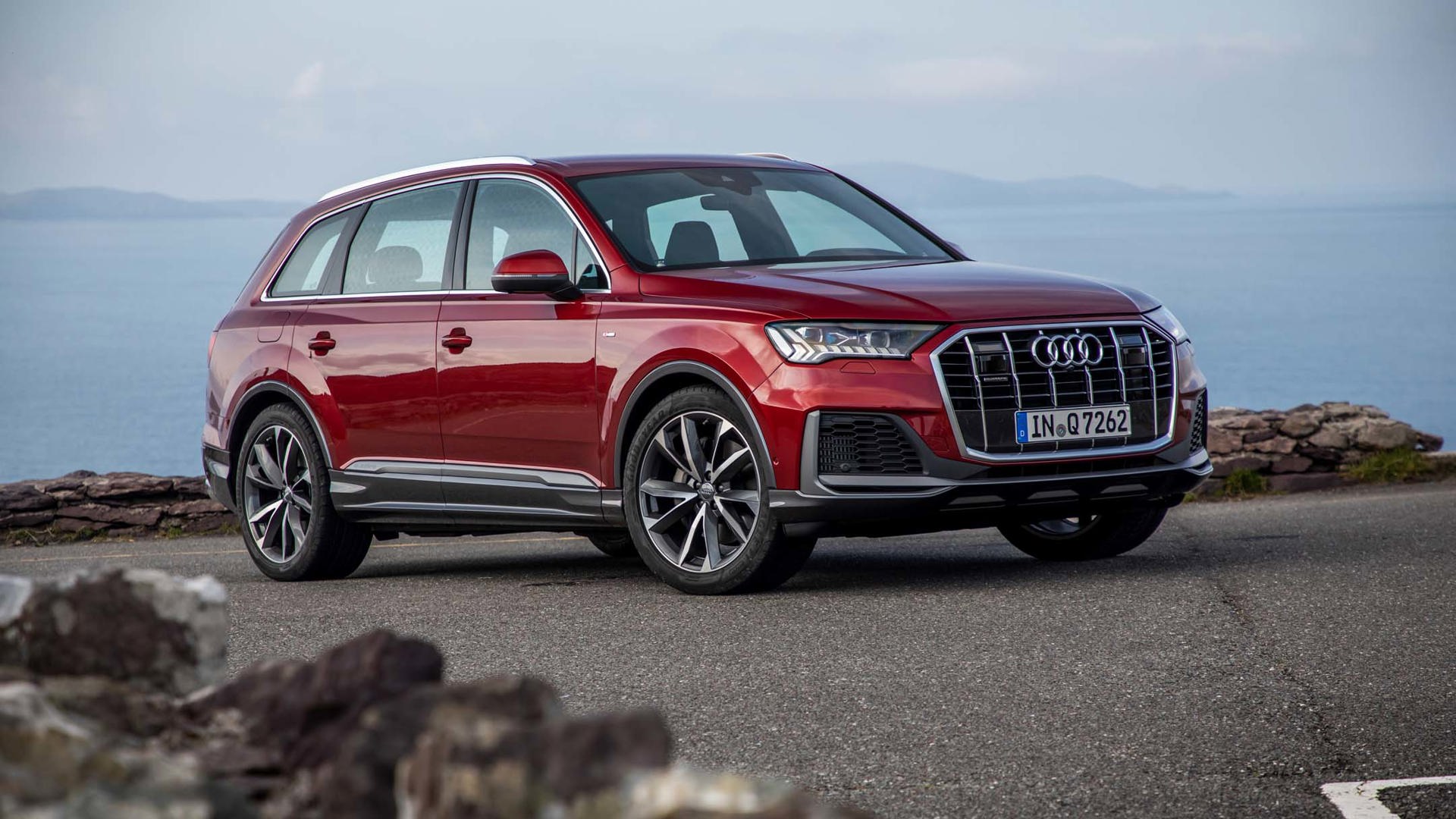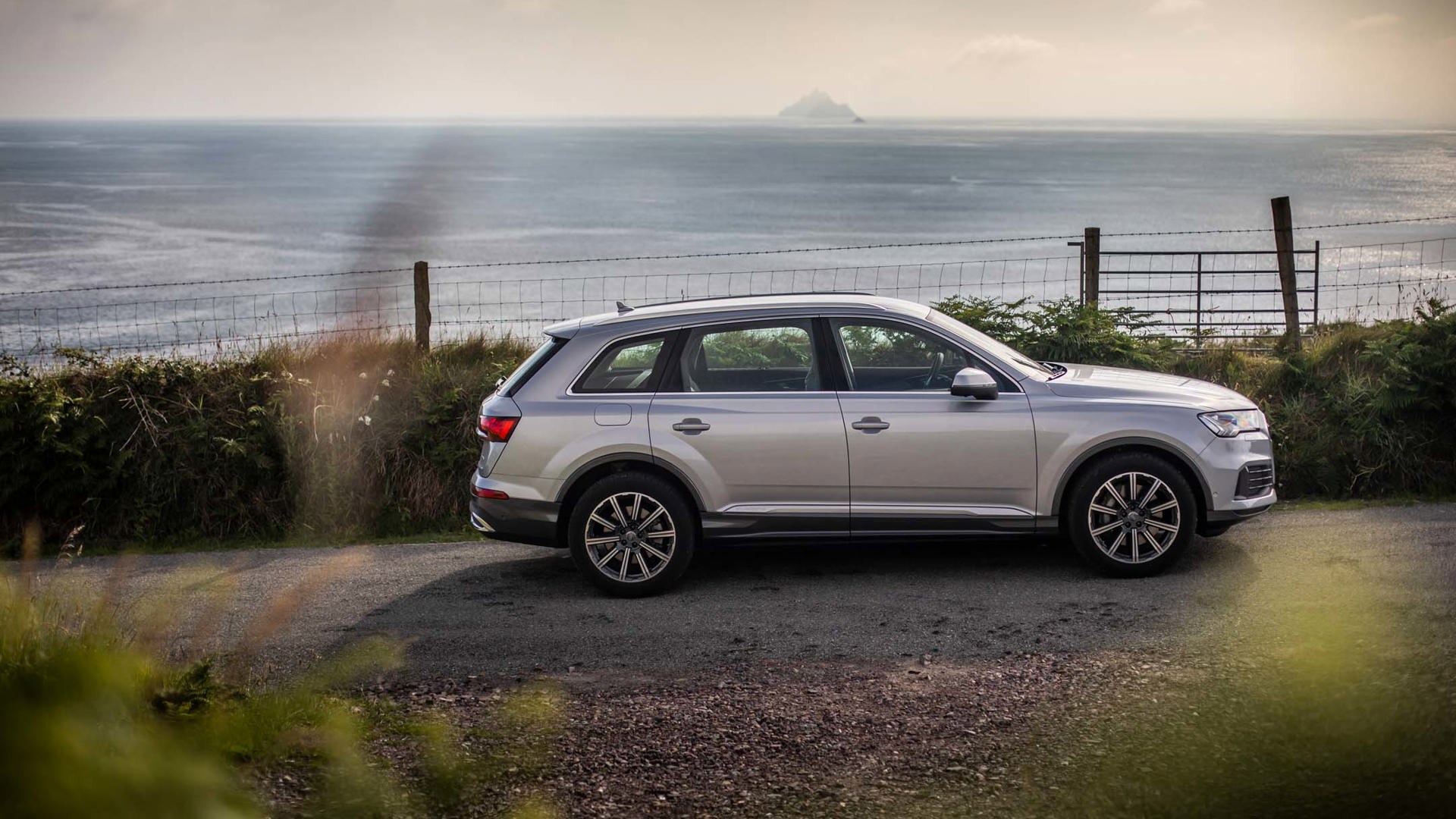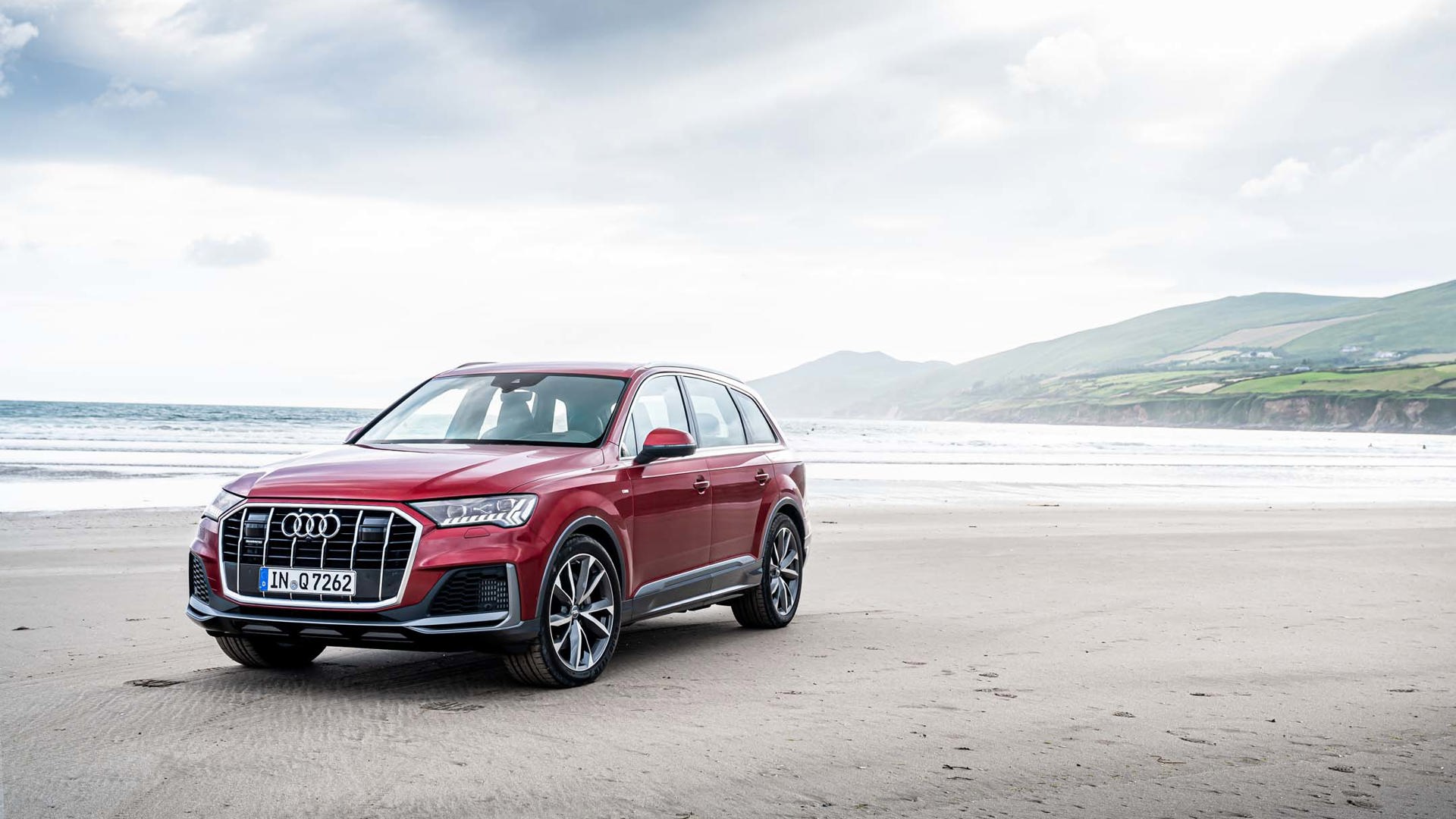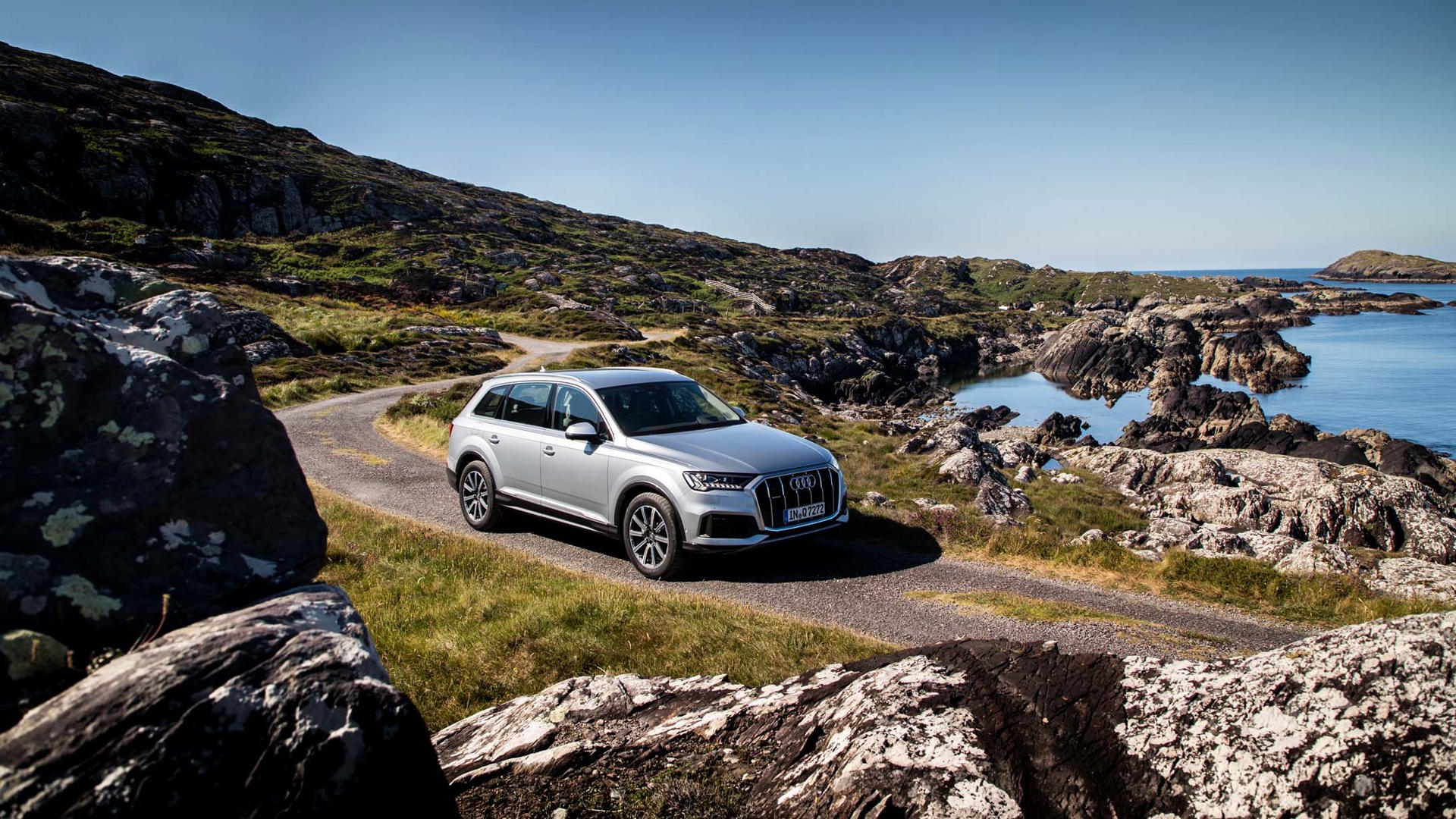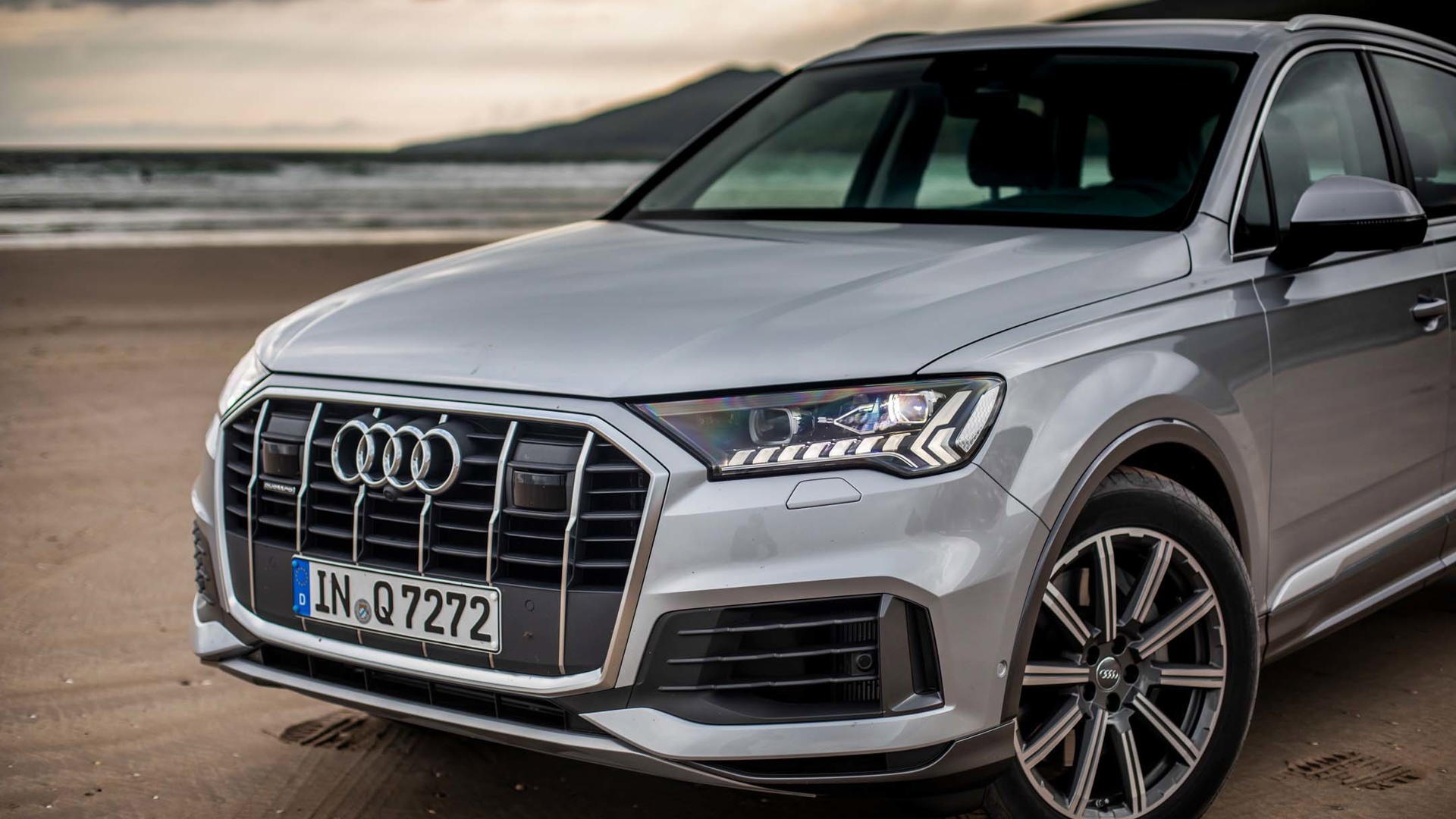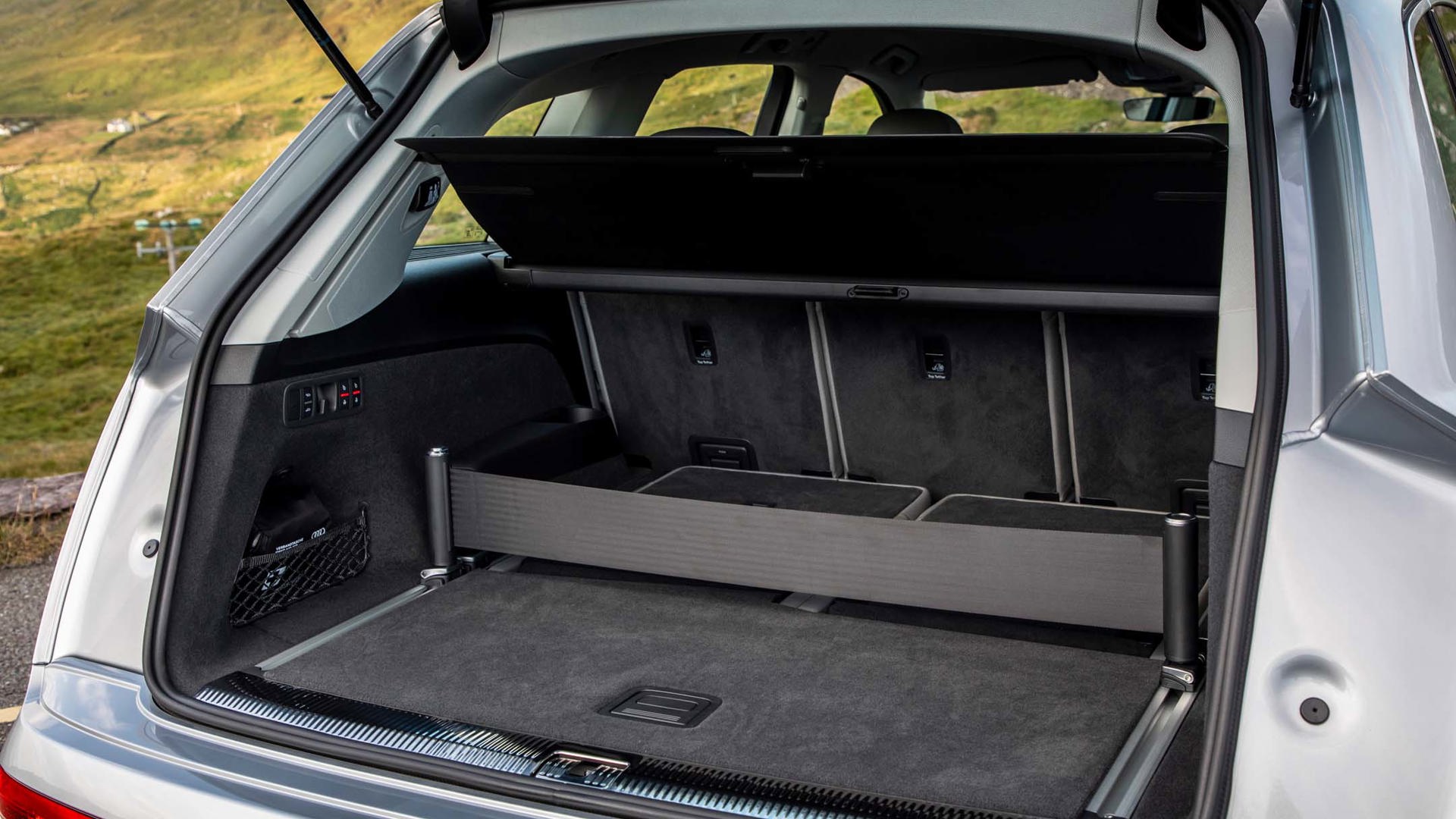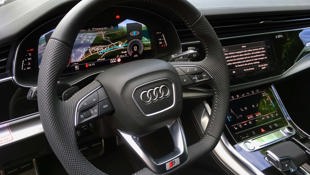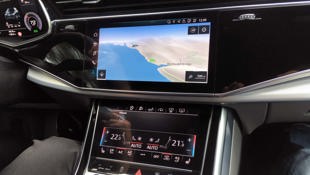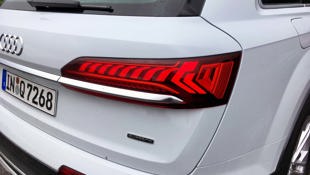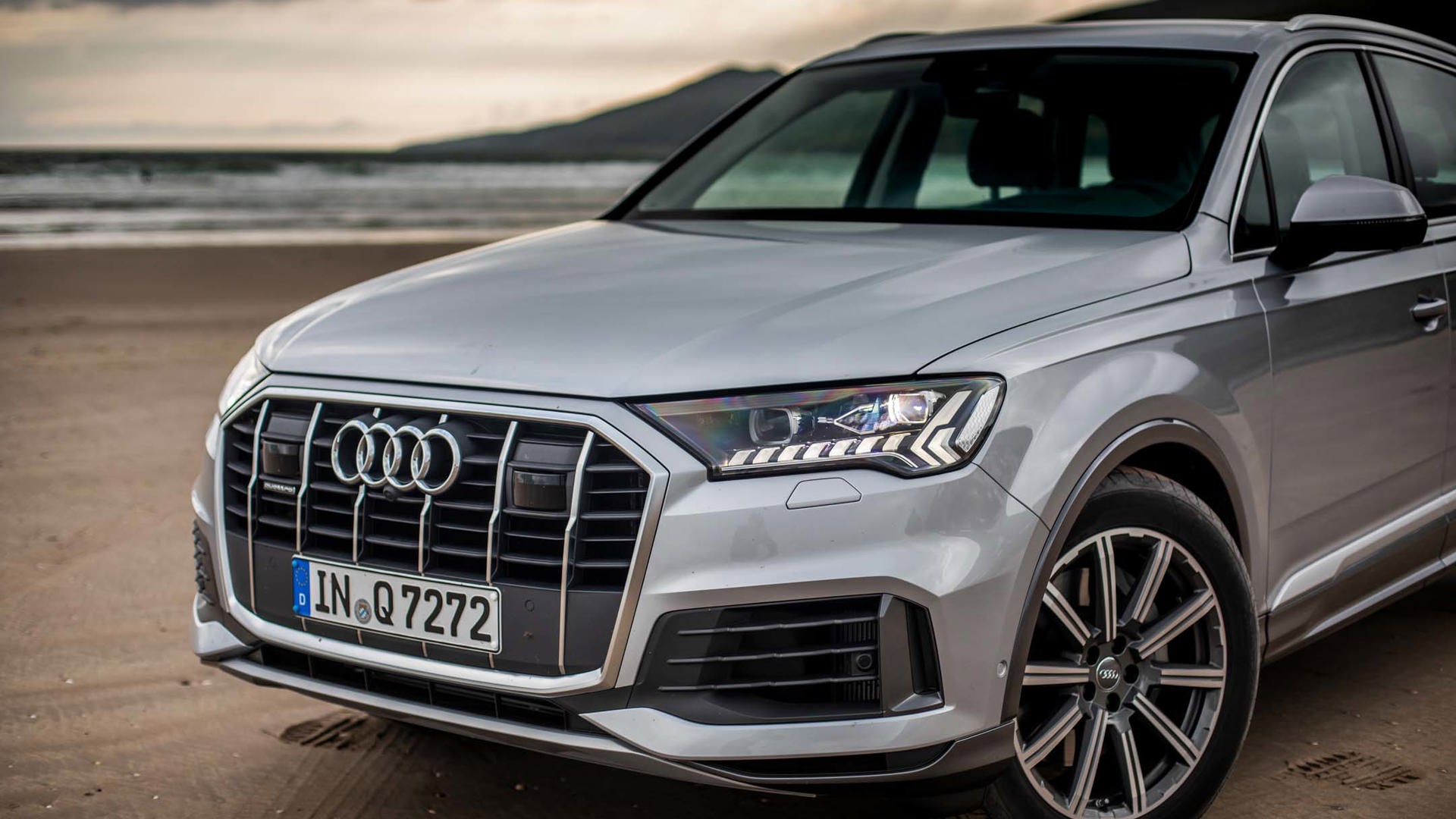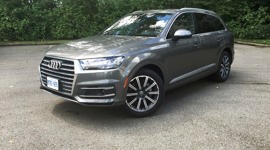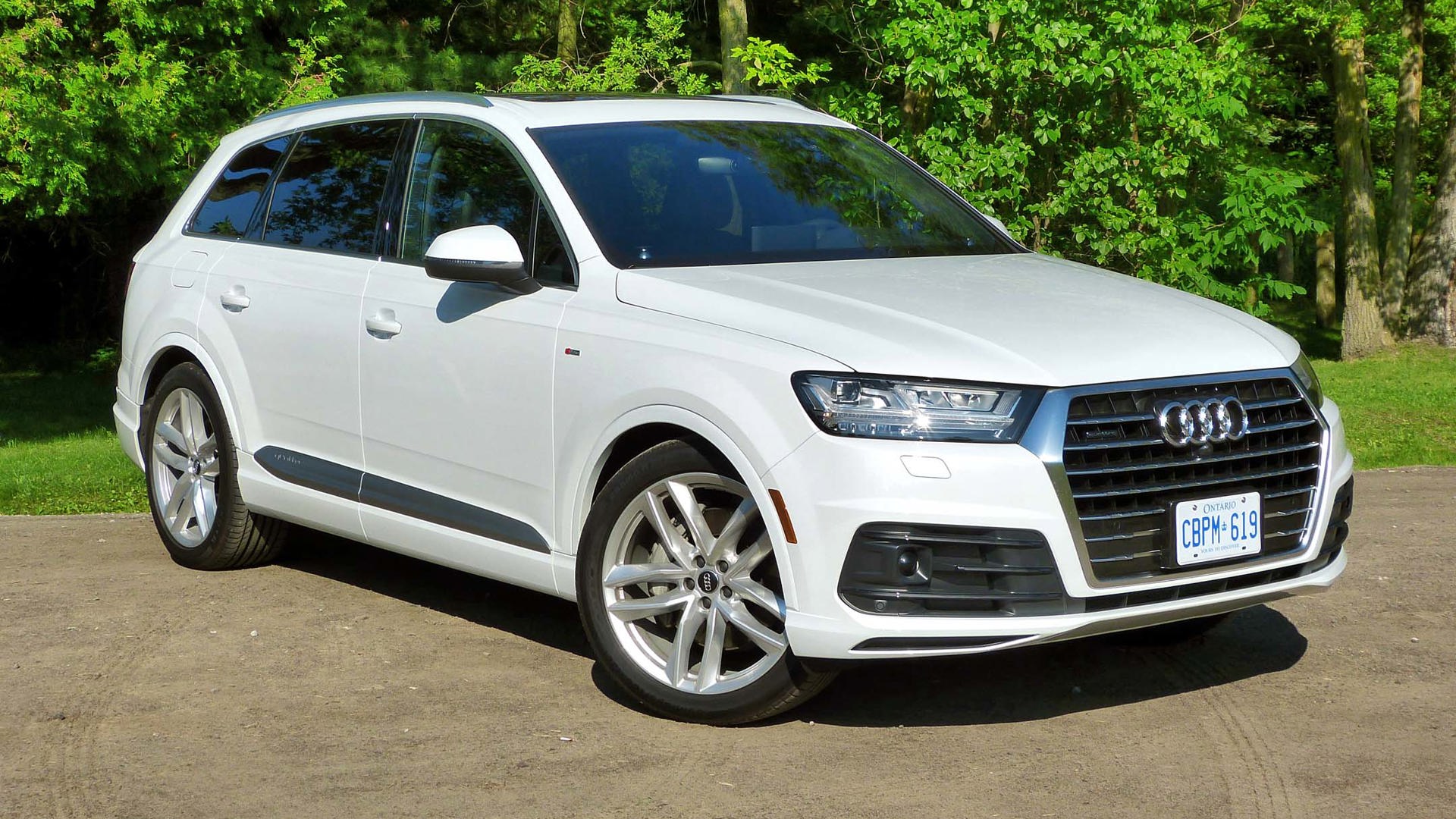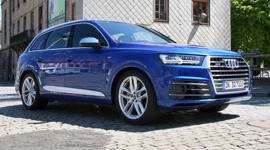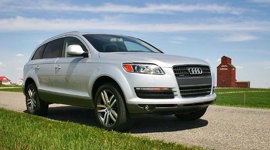KERRY, Ireland – Five years into its model run, the second-generation Audi Q7 three-row crossover gets a mid-cycle refresh that includes, along with the requisite grille redesign/enlargement, some significant upgrades that span the realms of both hardware and software.
Key among these are the adoption of Audi’s new interior architecture, the ditching of the old 3.0L supercharged V6 engine for Audi’s newer 3.0L turbocharged V6, a 48-volt mild-hybrid system, and available rear wheel steering and active roll stabilization.
So yeah, there’s a lot going on here. We’ll see the 2020 Audi Q7 in the first quarter of next year.
Virtual Cockpit, Touchscreens, and Lasers
Technology never sleeps, so it’s goodbye to the Audi’s long-serving MMI interface with its rotary controller, and hello to the dual central haptic-feedback touchscreens – or “black panel” configuration in Audi-speak – that bowed in the 2019 Audi A8 flagship sedan and has since made its way into the A6, A7, and Q8.
It’s a whole new way to interact with your Audi. The upper 10.1-inch screen deals with infotainment while the lower, slightly smaller panel controls vehicle functions. It also acts as a writing tablet for inputting navigation info and the like. The haptic buttons provide a modicum of feedback, and generally the system is easy to negotiate, offering the de rigueur pinch-and-swipe operation. It’s configurable, the display resolution is astoundingly clear, and with a processor fifty times faster than the outgoing unit, response time is instant.
The new horizontal aesthetic is elegant, modern, and of course built to the highest standard. Factor in the standard 12.3-inch Virtual Cockpit that sits ahead of the driver, and you have acres of digital real estate.
As with all these new systems, basic tactile functionality takes a hit. Case in point – while piloting this rather large crossover over the breathtakingly scenic, winding, and at times incredibly narrow Ring of Kerry route in southwest Ireland, my attempts at changing the interior temperature via prods on the touch panel were mostly inaccurate and distracting. And that’s all I’ll say about that.
In all other aspects, this updated Q7 is peach – expanding on the virtues that make this Audi crossover one of our favourites here at autoTRADER.ca. The new grille with its chrome vertical strakes, along with the redesigned headlights (Laser Matrix available) give the front end some added presence. Recontoured lower side body panels mitigate some of the previous boxiness of this ute, and slimmer taillights and fresh end styling spruce up the derrière.
New Power, New Efficiency
While the base 2020 Q7 is powered by a carry-over 248 hp, 273 lb-ft, 2.0L turbocharged four-cylinder, the cars we drove at this launch sported Audi’s silky 3.0L TSFI twin-turbo V6 that twists out 340 horsepower and 368 lb-ft from 1,370 to 4,500 rpm. That’s up 11 ponies and 43 torques over the outgoing supercharged unit. It’s hooked to an eight-speed Tiptronic gearbox, and Quattro all-wheel drive gets the power to the ground. If conditions dictate, the system can send up to 70 percent of the torque to the front wheels and 85 to the rear.
Helping with efficiency is a mild-hybrid system that incorporates 48-volt electronics, a lithium-ion battery, and a belt-driven alternator/starter (BAS) that will recoup kinetic braking energy, and use said juice to augment various electronic systems. There’s also a fuel-saving coast function wherein the V6 decouples and shuts down when conditions allow.
The 48-volt system also allows for the Q7’s new active roll stabilization, that, in the words of the suspension engineer who was riding in the back seat for a bit, is the key to taming the inherent body roll of a high-riding crossover while also maintaining acceptable ride compliance.
No arguments here. The second-gen Q7 has always been one of the sharper-handling vehicles in the segment, yet this red 2020 S-Line specimen I was piloting, loaded up with optional air suspension, active roll stabilization, and rear wheel steering, seemed to shrink down a couple more sizes as I picked up the pace on a few stretches of the Ring. It carved an accurate and poised path, effortlessly slicing through the twisties with nary a hint of slack or roll, helped along by the new quicker steering ratio – 2.4 versus 2.9 turns lock-to-lock. And never was the ride jarring.
The engine feels strong too, with little turbo lag. No fuel economy figures were available at this launch, but Audi claims the numbers are improved for 2020.
Pricing for the 2020 Audi Q7 will be announced closer to launch, and it would be fair to assume that with all the added tech and new engine, the Q7 would see a significant jump in its bottom line. Not so, says the head of PR for Audi Canada. The three trim lines continue (Komfort, Progressive, Technik) and pricing will not stray too far from the 2019s that currently start at $66,300 for the 2.0L and $70,300 for the V6.
